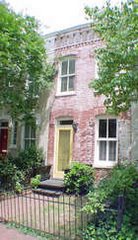 An engaging New York Times review looks at the concept of Great Books. Like so many useful links, I found this one on Arts and Letters Daily. It is a review of A Great Idea at the Time: The Rise, Fall, and Curious Afterlife of the Great Books by Alex Beam(PublicAffairs 2008). If you look up the book on Amazon, you'll find an interesting review by Max Weismann, co-founder of the Great Books Academy, who pointedly calls the work an ad hominem attack, which it may be (I won't opine until I read it).
An engaging New York Times review looks at the concept of Great Books. Like so many useful links, I found this one on Arts and Letters Daily. It is a review of A Great Idea at the Time: The Rise, Fall, and Curious Afterlife of the Great Books by Alex Beam(PublicAffairs 2008). If you look up the book on Amazon, you'll find an interesting review by Max Weismann, co-founder of the Great Books Academy, who pointedly calls the work an ad hominem attack, which it may be (I won't opine until I read it).I used to teach a literature course at Georgetown called "What It Means to be Well-Read," which tackled a similar topic -- how different eras and generations considered gentlemen and later ladies to be educated. Instead of doing what many of my fellows back in grad school did by picking apart the canon and finding things wrong with it (every canon is flawed, and so what?), instead we explored other eras' definitions of what constituted a must-read. We looked at times when Latin and Greek were required to be considered literate (albeit at fairly low levels bordering on the aphoristic), at the concept of a "lady's education," and we explored how different generations discarded their forebears' assumptions and replaced them with equally fragile ones of their own. Students loved it, and we had a lot of fun reading some of the required gems from the past that have now been lost (has anyone memorized Tennyson lately? Indeed does anyone memorize much of anything in school anymore? And why not?).
Reviews of the Beam book seem mixed, possibly because (as we discovered in our course together) many of us like the idea of Great Books, and someone has to help us figure out what to read. There is simply too much published in any generation not to take an educated approach and attempt to agree on certain works that endure beyond their moment. Great Books concepts may have their flaws (most notably: bowlderization, censorship, sexism and racism), but even worse is the opposite approach where all books are considered Equal, and where one discards all judgments and leaves young minds to wander without guide or historian. With 30,000 new books published every year in the U.S. alone, somebody has to figure out some way to make sense of it all.


1 comment:
AMEN!!
Post a Comment